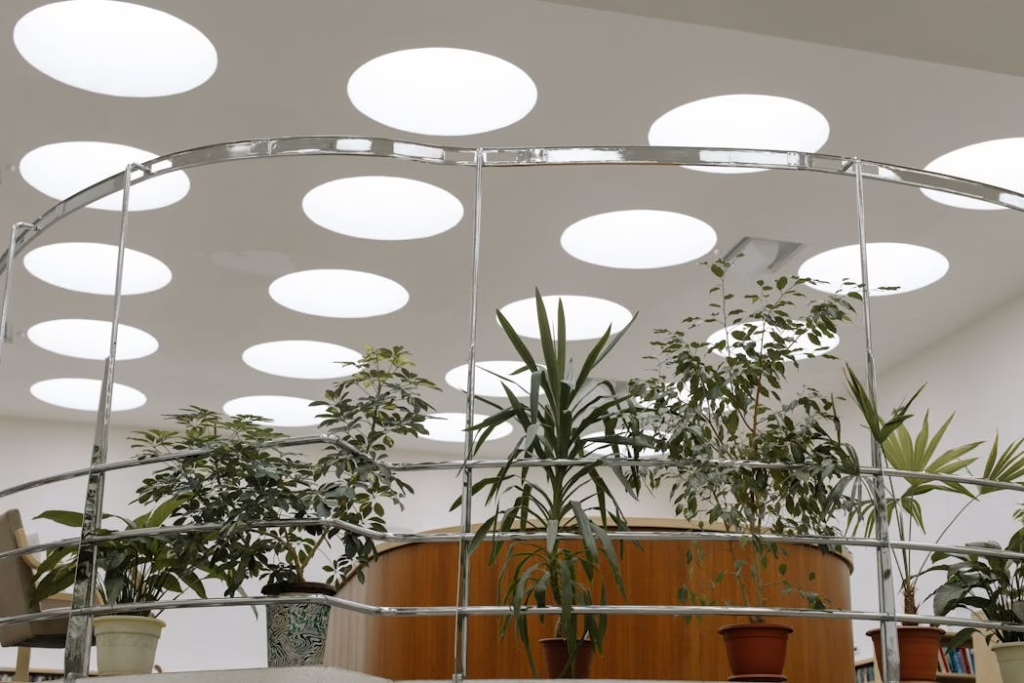Skylights are a remarkable architectural feature that can transform any building by flooding spaces with natural light. Defined as openings in the roof of a building covered with translucent or transparent materials, skylights allow sunlight to stream in during the day, enhancing the ambiance and reducing the need for artificial lighting. This article delves into the various types of skylights, their advantages and disadvantages, and how they can improve the aesthetic and functional qualities of a building.

Types of Skylights for Building Roofs
Skylights come in various shapes and sizes, each designed to meet specific architectural needs and aesthetic preferences. The following are some common types of skylights:
1. Fixed Skylight
Fixed skylights are the most popular type, designed to be non-ventilated and completely sealed to the roof. These skylights are typically made from glass and are commonly found in low-lit areas such as stairwells and attics. Their primary purpose is to introduce natural light into these spaces without any airflow, making them ideal for places where ventilation is not required.
2. Ventilated Skylight
Ventilated skylights serve a dual purpose: they allow both light and air to enter the building. These skylights are particularly suited for areas like kitchens and bathrooms, where they help remove excess moisture and ensure a constant flow of fresh air. They can be operated manually, automatically, or even through remote control. Advanced models can automatically close when it starts to rain, enhancing energy efficiency by reducing the need for air conditioning.
3. Tubular Skylight
For spaces with limited roof area, tubular skylights offer a practical solution. Also known as tube skylights, they consist of a small tube-shaped pipe, typically 10-15 inches in diameter, covered with a spherical dome that collects light. The interior of the tube features a reflective surface, allowing for efficient light transmission. Tubular skylights are perfect for illuminating specific objects like living walls or aquariums.
4. Custom Skylight
Custom skylights are tailored to meet unique architectural requirements and enhance the aesthetic appeal of a building. These skylights can be crafted in various shapes and sizes, providing versatility for creative designs. When installing custom skylights, it’s essential to use high-quality, hurricane-resistant glass and ensure proper installation to withstand weather conditions.
5. Pyramid Skylight
Named for its distinctive pyramid shape, this skylight type typically features a main rafter with horizontal purlins. Pyramid skylights are often used in larger spaces like lobbies and entryways, adding grandeur and natural light. They can span up to 20 feet wide, with the length varying based on specific needs. Proper sealing between the glass and purlins is crucial to prevent leaks.
6. Dome Acrylic Skylight
Dome acrylic skylights are made from durable and flexible plastics, designed to distribute sunlight evenly throughout a room. Their dome shape prevents direct sunlight from entering, creating a soft light effect even in low-light conditions. Often constructed with two layers for insulation, these skylights are excellent for enhancing entrances and spotlighting decorative features like sculptures and murals.
7. Barrel Vault Skylight
Barrel vault skylights are typically used in non-residential buildings, covering a significant portion of the roof area—often more than 80%. They are ideal for passageways, canopies, and large commercial spaces. However, due to their size and design, they may offer limited privacy, making them more suitable for public or industrial applications.
Advantages of Skylights
Skylights provide numerous benefits that enhance the functionality and appearance of a building:
- Natural Ventilation and Lighting: They improve air circulation and bring in ample natural light, creating a more pleasant environment.
- Aesthetic Appeal: Skylights add beauty to a building’s design, making spaces feel more open and inviting.
- Reduced Artificial Lighting Needs: By harnessing sunlight, skylights can significantly lower electricity bills by minimizing the use of artificial lighting.
- Health Benefits: Exposure to natural light increases Vitamin D intake, promoting well-being.
- Temperature Regulation: Ventilated skylights help maintain temperature balance by allowing hot air to escape and fresh air to enter, reducing the need for air conditioning.
- Increased Property Value: A well-placed skylight can enhance a home’s resale value by improving its overall appeal.
- Glare Reduction: Tinted glass options can minimize glare, creating a more comfortable indoor environment.
Disadvantages of Skylights
Despite their many advantages, skylights also have some drawbacks that should be considered:
- Light and Heat Control Challenges: The amount of light and heat entering through skylights cannot always be easily controlled, potentially leading to discomfort.
- Increased Cooling Needs in Summer: In warmer months, excess heat may necessitate the use of artificial cooling solutions.
- Heat Loss in Winter: Skylights can contribute to heat loss during winter, particularly if not properly insulated.
- Maintenance Requirements: Dust and debris can accumulate on skylights, requiring regular cleaning to maintain their effectiveness.
- Cleaning Difficulty: Positioned on the roof, skylights can be challenging to clean, making upkeep a labor-intensive task.
- Leakage Issues: Improper sealing can lead to leaks, which may cause damage over time.
- Glare and Fading: Direct sunlight can create glare on work surfaces and may cause fading of furnishings and decor.
- Higher Installation and Maintenance Costs: Skylights typically require more investment and ongoing maintenance compared to traditional windows.
Conclusion
Skylights offer a unique opportunity to bring natural light and ventilation into a building while enhancing its aesthetic appeal. With various types to choose from, homeowners and builders can select the ideal skylight to suit their needs and preferences. While they provide numerous benefits, it is essential to consider the potential drawbacks, including maintenance requirements and temperature control issues. By understanding both the advantages and disadvantages, individuals can make informed decisions about incorporating skylights into their architectural designs, ultimately creating brighter, more inviting spaces.
